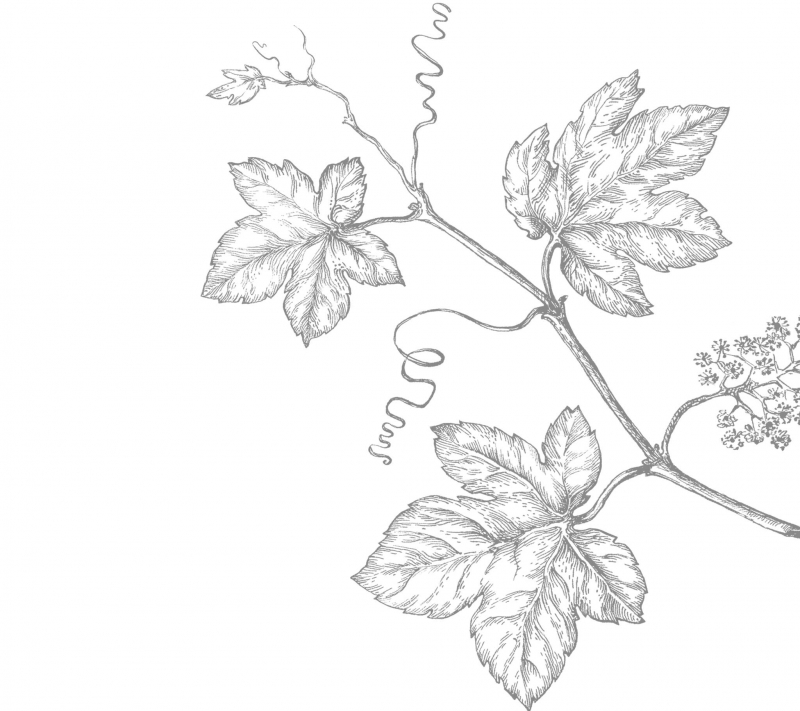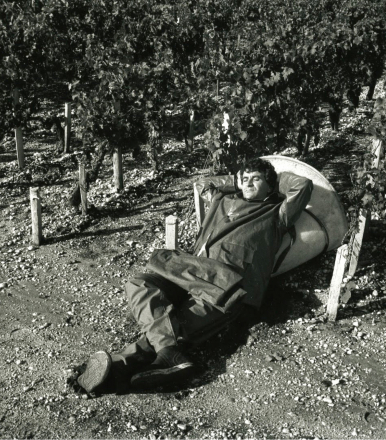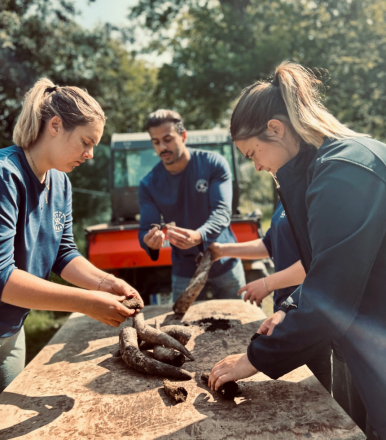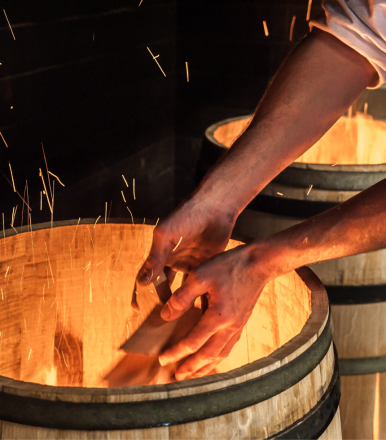
Read L'Évangile
Introduction
Domaines Barons de Rothschild Lafite acquired L’Évangile in 1990. The Ducasse family was keen to ensure continuity of care and sustainability for the estate.
In the house in the heart of the vineyards, built of Bordeaux stone in its mythical clay gravel setting, bees and horses, winegrowers and farmers come together.
In the midst of an abundance of nature, this is a house full of ideas and experiments. A house where, as soon as we pass through the red wooden doors, we land in the vineyards, where the team observes and cares for the Merlot and Cabernet Franc vines.
In the winery, research and work are carried out in unison and without ever forgetting the raw material provided by the vines. L’Évangile is also a table that is always set and ready to receive guests, whether they are curious or experts, around a rib steak grilled on a fire made with the shoots of these same vines. And certainly, a glass of wine. A balanced, powerful and round, sharp, and gentle wine.
Château L’Évangile is also the first of the Domaines Barons de Rothschild Lafite estates to use organic farming methods. All the vines have been replanted and are learning to adapt.
The Vineyard
It is by one of those mysteries of geology that on this plateau, south-east of Pomerol, a curious accident brought to the surface a long line of gravel, a rare soil on which the vineyard of Château L’Évangile rests.
Its location is quite privileged: Bordered to the north by the vines of Château Pétrus, it is only separated from Cheval Blanc in Saint-Emilion, to the south, by a small road.
Over 22 hectares, 43 plots evoke their environment (Maison, Cuvier), their locality (Catusseau, Chantecaille, Jean Faure) or their configuration (La Pointe) by their name.
This parcel of land consists of three major terroir units. Firstly, the pelosols, characterised by swelling clays at the top of the plateau. Then soils with a gravel-clay to gravel-sand texture. Finally, in the lower part of the appellation, soils with a predominantly sandy texture.
The vineyard of L’Évangile is planted mainly with Merlot (79%), supplemented by Cabernet Franc (20%) and a little Cabernet Sauvignon (1%).
The plots are largely grassed over. The property is also home to beehives and significant biodiversity along its 2 km of hedges.
History
The Léglise family, originally from Libourne, is at the origin of Château L’Évangile. In the middle of the 18th century, they actively participated in the creation of the Pomerol vineyard. L’Évangile appears on the 1741 land registers under the name of Fazilleau.
At the turn of the 19th century, the estate was already in a configuration similar to today’s, with an area of approximately 13 hectares when it was sold to a lawyer named Isambert. He “christened” the estate with the name L’Évangile.
In 1862, L’Évangile was bought by Paul Chaperon, whose heirs, the Ducasse family, remained owners until 1990. Paul Chaperon established the reputation of the estate and had the Second Empire style residence of L’Évangile built. From the second edition of Cocks Féret, in 1868, L’Évangile was listed and considered as a “Premier Cru du Haut-Pomerol”.
When Paul Chaperon died around 1900, his descendants kept the property until Louis Ducasse, who took over in 1957 a property that had been severely affected by the frosts of the previous year. He would strive – successfully – to restore the standing of L’Évangile. From 1982 onwards, his widow, Simone Ducasse, ensured the family’s continuity until 1990, when she chose Baron Eric de Rothschild as her successor.
Since 2020, Domaines Barons de Lafite Rothschild has entrusted the management of the estate to Juliette Couderc.
Our Commitment
A vineyard on a human scale, a natural laboratory for the agriculture of tomorrow
Organic farming, biodynamic experiments and the reorganisation of the vineyard to encourage biodiversity make L’Évangile a natural leader in the Pomerol appellation.
The site leads in technical adaptations to the effects of global warming, from late pruning of the most frost-sensitive plots to optimizing leaf surface area to better manage water stress.
Thanks to the amateur beekeepers in our ranks, bees have become a subject of collective and unifying interest: 5 hives have been installed on site, and the whole team takes part in harvesting and packaging, guided by our beekeeperwinemakers.
This Château joined the B Corp community in December 2023. To learn more, click here
The Wines
Château L’Évangile is described in an old edition of the “Grands vins de Bordeaux” as “a full, elegant wine with an incomparable bouquet and finesse”.
The second wine, Blason de L’Évangile, has similar characteristics to its elder brother. With shorter barrel ageing than that of Château L’Évangile, it is a wine best enjoyed young.
At Château L’Évangile, the use of vats other than barrels – such as foudres, amphorae or concrete vats – allows us to adapt to the identity of each vintage.
 Read next
Read next



